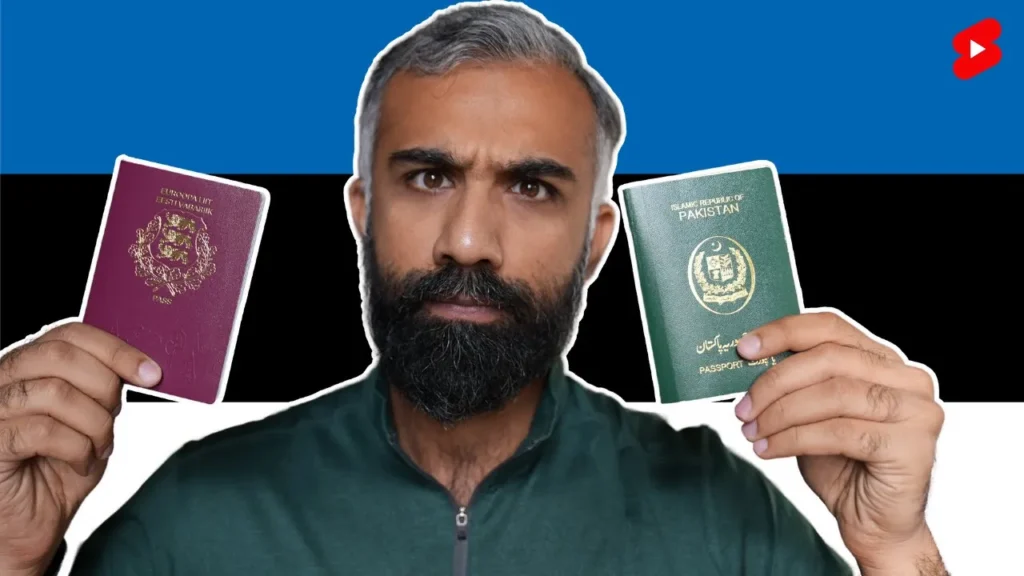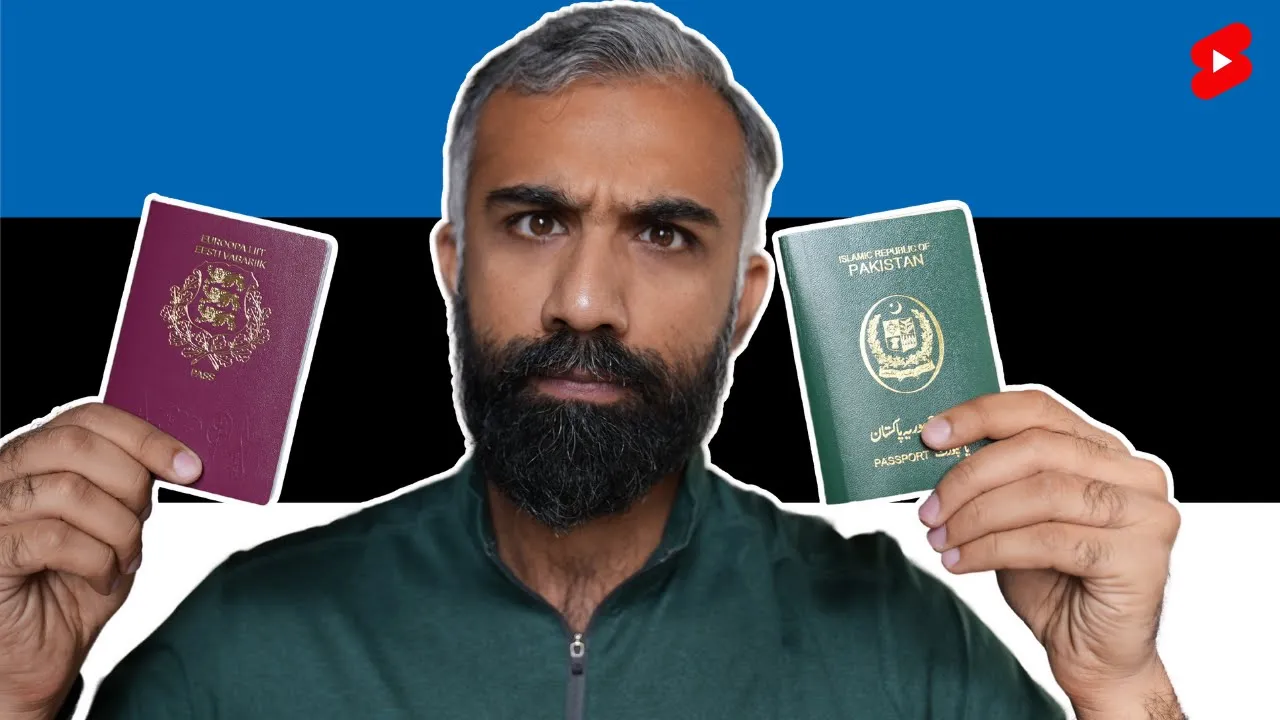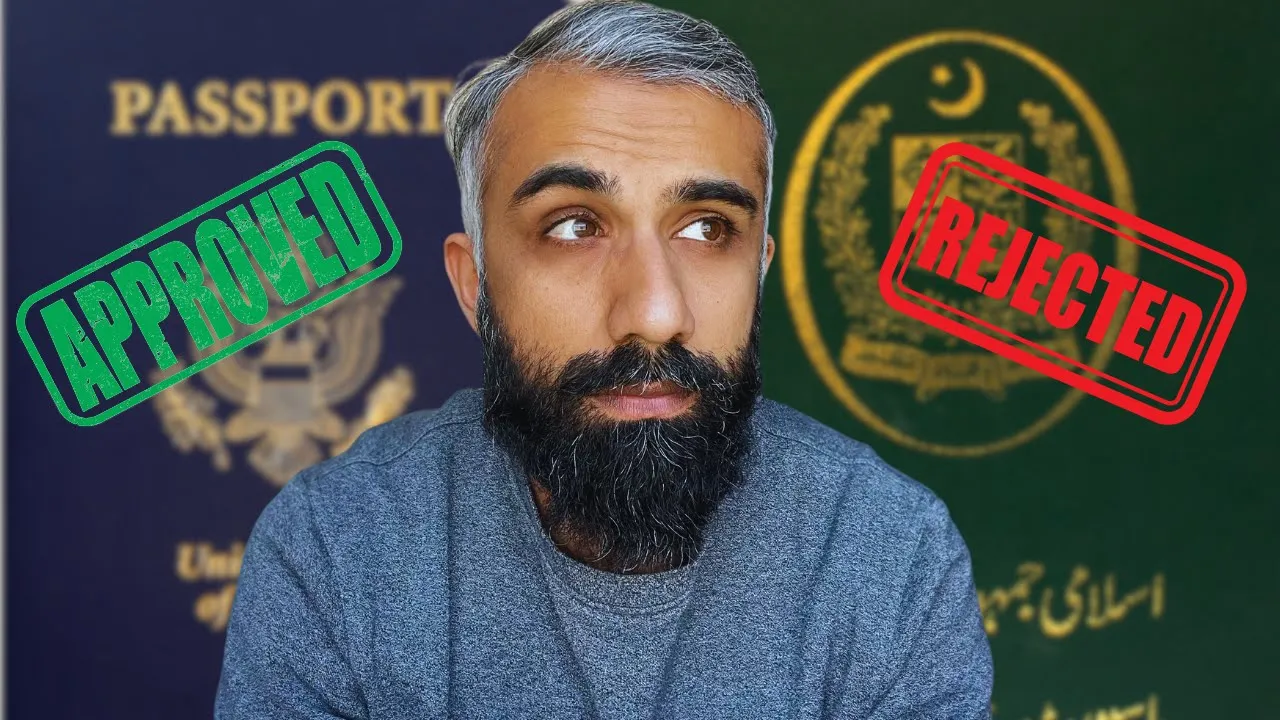How an Estonian Passport Transformed My Travel Experience
After living in Estonia for nine years, I finally became an Estonian citizen—a milestone that drastically changed my life. But what does that actually mean? How does an Estonian passport impact travel, and how different is it from traveling with a Pakistani passport, one of the weakest in the world?
Having traveled extensively with both passports, I want to share a first-hand comparison of what it’s like to move through the world with one of the strongest passports vs. one of the most restricted.
This isn’t just about visas—it’s about freedom, dignity, and opportunity.

The Passport Divide: Estonia vs. Pakistan
Let’s break down the numbers:
🌍 Pakistani Passport
- Rank: 104th (one of the weakest in the world)
- Visa-Free Destinations: 33
🌍 Estonian Passport
- Rank: 9th (one of the strongest in the world)
- Visa-Free Destinations: 183
That’s a huge difference. With an Estonian passport, I can travel almost anywhere without a visa or with just an easy online application. With a Pakistani passport, every trip involved long applications, financial scrutiny, and uncertainty.
Let’s compare my experiences traveling to three major destinations: the UK, the US, and Canada—first on a Pakistani passport, then on an Estonian passport.
1️⃣ Traveling to the UK
On a Pakistani Passport:
🛂 Visa Required – £100+ fee, long forms, proof of income, return guarantee
⏳ Processing Time – 3-4 weeks
📑 Documents Needed – Bank statements, travel insurance, employment letter, proof of strong ties to Pakistan
❌ Uncertainty – Even after all this, the visa could still be refused
On an Estonian Passport:
✅ No Visa Required – Travel anytime
⏳ Processing Time – Zero
💰 Cost – £0
The difference? At least £100 and a month of waiting vs. simply booking a ticket and flying.
🔹 The Psychological Difference: Traveling on a weak passport means you always feel on edge—random searches, extra questioning, suspicion. With my Estonian passport, the UK border control was smooth, friendly, and even made a joke about my red jacket matching their colors.
2️⃣ Traveling to the US
On a Pakistani Passport:
🛂 Visa Required – $185 fee, embassy interview, extensive documentation
⏳ Processing Time – Weeks to months
📑 Documents Needed – Bank statements, police clearance, job letter, proof of financial stability
🚨 Additional Screening – Many Pakistanis are subjected to extra background checks
😰 Risk of Detention – If flagged, you could be taken to a “secondary screening room” at the airport for questioning
On an Estonian Passport:
✅ No Visa Interview Needed – Just an ESTA e-Visa ($21) online application
⏳ Processing Time – 4-5 hours
💰 Cost – $21 vs. $185
🔹 Airport Experience: On my Pakistani passport, I was once taken to a screening room, where my phone was confiscated, and I had to wait without knowing what would happen next. With my Estonian passport, the officer simply asked, “Where are you coming from? How long will you stay?” and I was on my way.
3️⃣ Traveling to Canada
On a Pakistani Passport:
🛂 Visa Required – $100 Canadian visa application fee
⏳ Processing Time – 79 days (almost 3 months!)
📑 Documents Needed – Proof of funds, employment, accommodation, insurance
❌ Possibility of Rejection – Even after waiting for months, there’s no guarantee
On an Estonian Passport:
✅ No Visa Required for Land Entry – If entering Canada from the US, I don’t need any visa.
✅ ETA e-Visa Required for Air Travel – A simple online form, $7 fee, processed in hours
The difference? $7 and 4 hours vs. $100 and 3 months.
The Real Cost of a Weak Passport
Traveling with a weaker passport isn’t just financially expensive—it’s mentally exhausting.
🚧 More Money – Visa fees, travel to embassies, document preparation, insurance costs
⏳ More Time – Weeks or months of waiting
😰 More Stress – Random checks, unpredictable delays, the fear of being denied entry
People from poorer countries actually pay more just to visit developed nations—while those from wealthier nations travel freely.
🔹 Nothing about me changed except my passport—but my travel experience is now completely different.
What Needs to Change?
This experience raises a crucial question: Why should a person’s ability to travel depend on their birthplace?
Estonia, in many ways, has shown what’s possible:
✅ E-Residency – Opened business opportunities to people worldwide
✅ Digital Nomad Visa – Allowed remote workers to legally live in Estonia
✅ Efficient Immigration System – Estonia’s digitized services make processes smoother
But the world still has a long way to go.
💡 A Better Solution?
What if we created a Global Travel Passport—an agreement between nations that allows qualified travelers to move freely, regardless of their birthplace?
We already have Schengen visas, which allow travel across 27 countries—why not expand this idea globally?
Final Thoughts: What an Estonian Passport Taught Me
Becoming a European citizen changed my life. Not just because of the document itself, but because of the freedom it represents.
🌍 Traveling should be about who you are, not where you were born.
🌍 Talented people from developing countries deserve better access to opportunities.
🌍 The global visa system needs reform—it’s outdated, unfair, and broken.
🚀 If you found this article insightful, share your thoughts below!
📌 Interested in more about life in Estonia and how it compares globally? Visit lifeinestonia.com for more insights!




